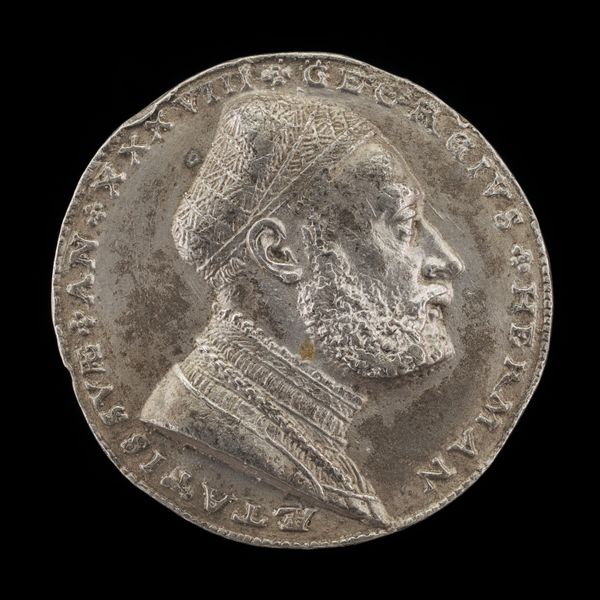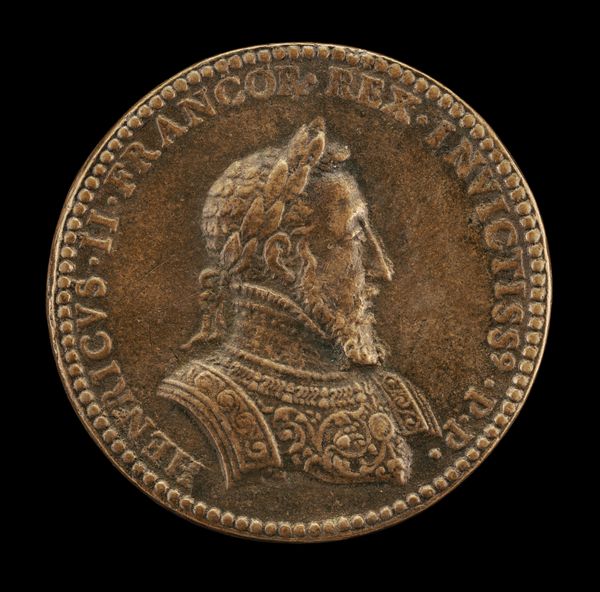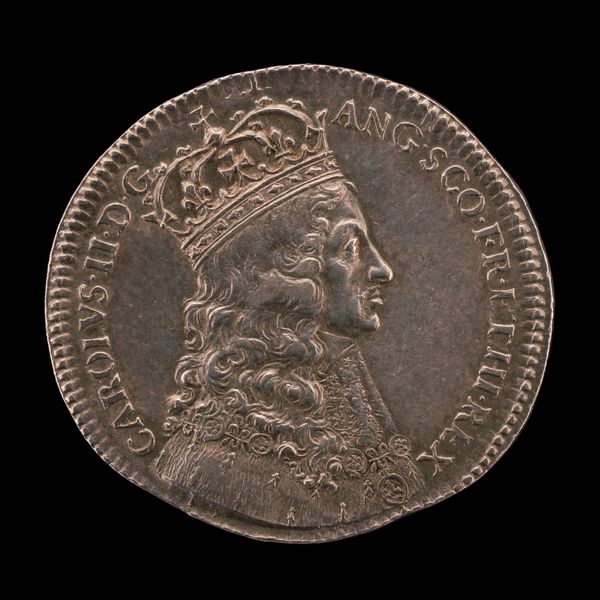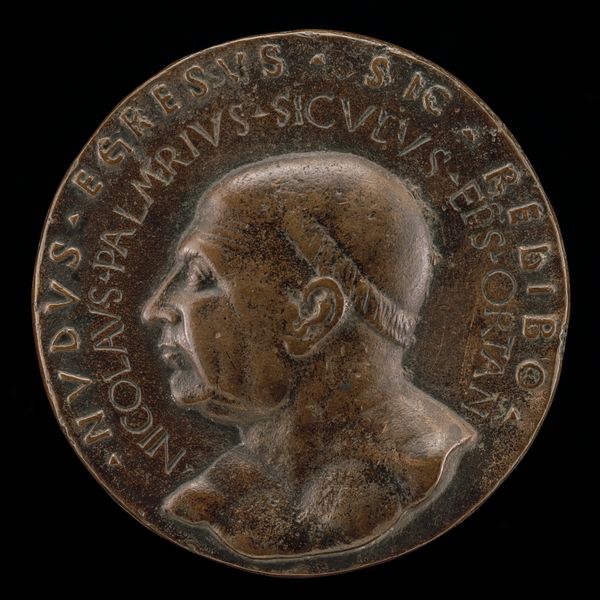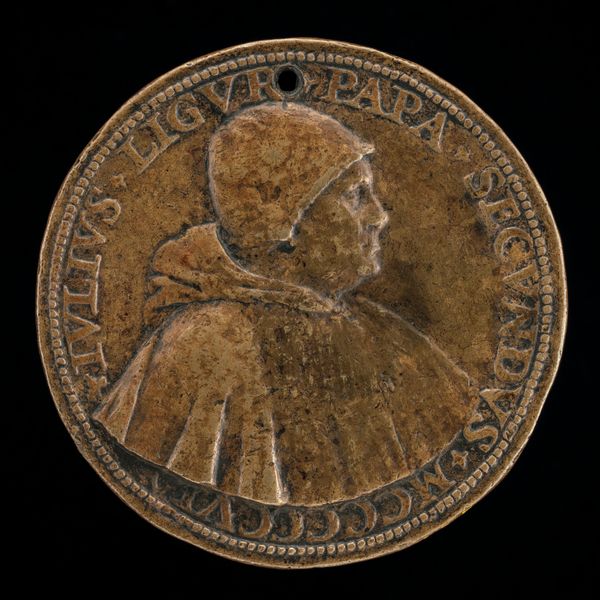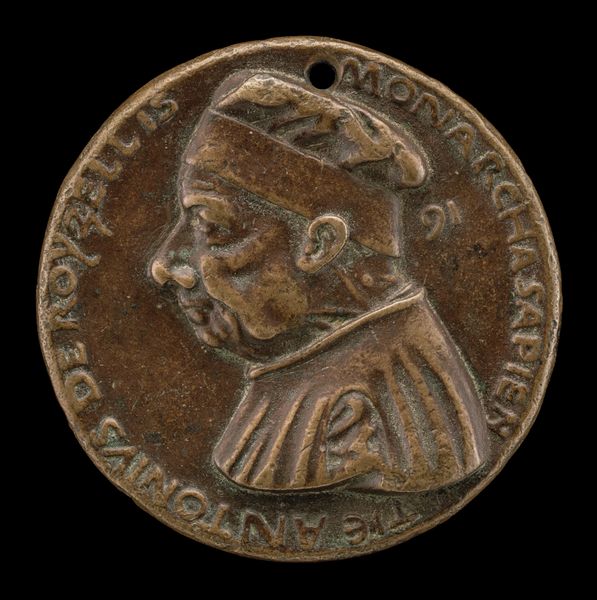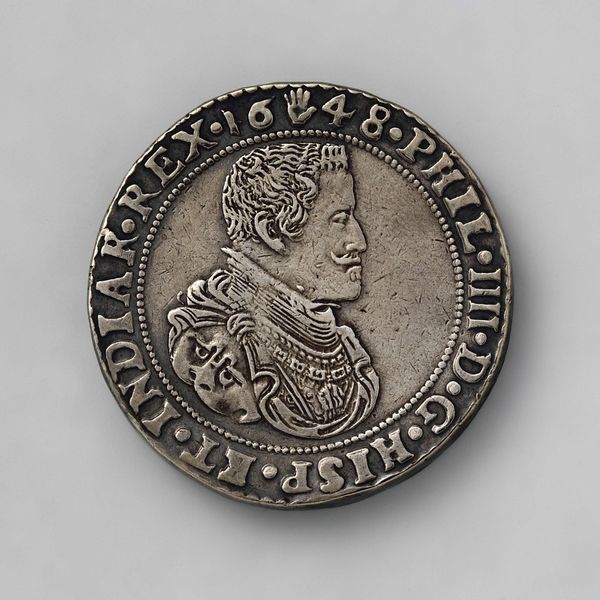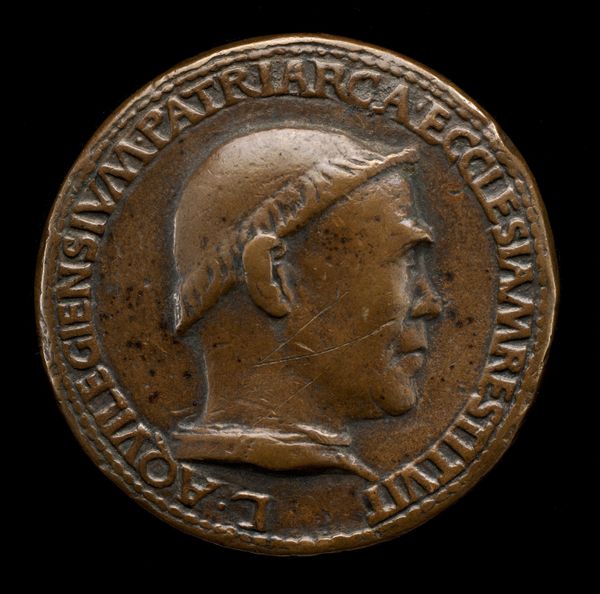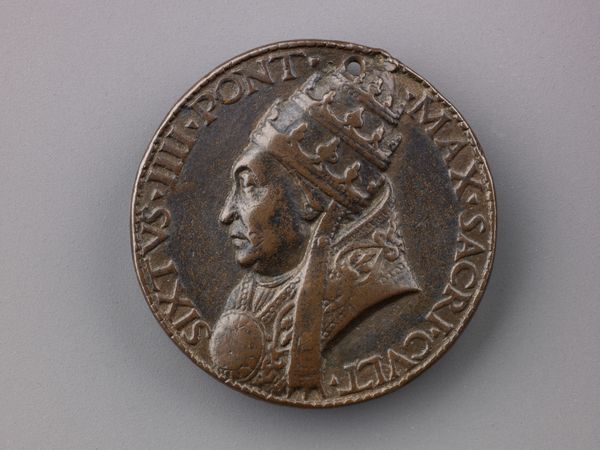
Antoine, 1489-1544, Duke of Lorraine and Bar 1508 1521 - 1525
0:00
0:00
metal, sculpture
#
portrait
#
medal
#
metal
#
stone
#
sculpture
#
11_renaissance
#
sculpture
#
italian-renaissance
Dimensions: overall (diameter): 4.3 cm (1 11/16 in.) gross weight: 57.37 gr (0.057 kg)
Copyright: National Gallery of Art: CC0 1.0
Editor: So, here we have a metal sculpture from the Renaissance, "Antoine, 1489-1544, Duke of Lorraine and Bar 1508," created by Jacques Gauvain between 1521 and 1525. It’s a circular portrait. There's something solemn about it. What strikes you about it? Curator: What I see is a man immortalized, intentionally positioned within a network of power symbols. It's not just a face; it's a carefully constructed representation meant to convey authority and lineage. Editor: Can you unpack that a little? What symbols are at play? Curator: Look at the inscription surrounding the portrait – it literally frames the Duke, reinforcing his identity and titles. His hat, with its intricate design, and the medal adorning his chest aren’t merely decorative; they are visual markers of his status. Think of the cultural weight that such adornments carried – visual cues understood by the elite. These portraits, more than likenesses, create continuity across generations. How might later generations interpret his stern profile? Editor: I see what you mean. It's like a visual resume meant to last. The choice to use metal; is there any symbolism there? Curator: Precisely! Metal speaks to permanence, strength. It is less likely to decay. Also, consider the tactile experience of holding it – the weight, the coolness. All of this contributes to a sense of enduring power, quite different than, say, a painted portrait. Don't you think? Editor: Definitely, it adds another dimension. I never thought about the material itself carrying so much meaning! Curator: These artists understood the potent language of objects. Medals weren’t just made; they were crafted with the intention of shaping perception and memory. It really underscores how art can be an exercise in controlling a narrative. Editor: So, it's about constructing an image, a legacy, that speaks volumes beyond just the subject's appearance. I will think differently about art from this era now!
Comments
No comments
Be the first to comment and join the conversation on the ultimate creative platform.


